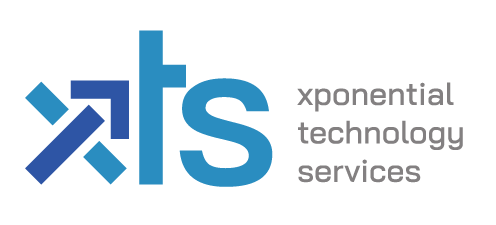Recent developments in the AI space across India and China strongly reinforce the core premise of this article—India as the torchbearer of AI application for today, and China as the architect of AI infrastructure for tomorrow. While both nations are advancing rapidly, their focus areas remain rooted in distinct national identities shaped by decades of philosophical, political, and economic evolution.
In India, AI’s current momentum is driven not only by the ambition to solve local challenges, but by the growing realization that India is critical to making global AI platforms meaningful and accessible. Startups like Sarvam AI, Krutrim, and Gan.ai are building localized LLMs and generative AI tools tailored to Indian languages and behaviors. But their impact goes beyond borders. These companies—and many like them—embody a unique strength: the ability to adapt, scale, and contextualize complex AI models for real-world usage at a grassroots level.
This is where India stands apart. Its engineers, entrepreneurs, and solution designers play a silent but pivotal role in enabling AI’s global usability. Whether it’s an AI-based customer support module adapted for a telecom provider in Africa, a personalized tutoring engine for Southeast Asia, or a conversational commerce bot for the Middle East—chances are, Indian talent and thinking were involved in bridging the last-mile gap between abstract models and usable solutions.
Large R&D-heavy platforms like OpenAI, Google DeepMind, and Meta’s AI labs may build the brains, but it is India’s innovation culture—rooted in constraints, adaptability, and frugal engineering—that often makes those brains useful for the common citizen, anywhere in the world. India doesn’t just use AI—it teaches the world how to live with it.
At home, the use cases are even more powerful. India is applying AI to enhance governance (AI in grievance redressal, document digitization), education (adaptive learning), healthcare (predictive analytics in diagnostics), agriculture (crop intelligence, water usage optimization), and banking (fraud detection and risk scoring). Government-backed initiatives like Bhashini are building public LLMs to break linguistic barriers across a country of over 20 official languages—something no private tech giant has attempted at scale.
Contrast this with China, where the AI agenda is driven by a desire for strategic independence and technological sovereignty. Confronted with Western export restrictions and chip embargoes, China is investing heavily in its domestic AI stack—building foundational models like ERNIE Bot, developing its own GPUs, and embedding AI into surveillance, infrastructure, and manufacturing systems. State-owned enterprises and tech conglomerates work in close alignment with government policy to scale AI in ways that reinforce national strength and future readiness.
The contrast is stark, yet complementary. India represents AI’s power to solve for humanity today—through access, scale, and real-life use. China represents AI’s power to shape tomorrow’s rules of engagement—through infrastructure, autonomy, and systemic control.
Together, they underscore the Indo-China paradox: two nations, two philosophies, and two futures converging around the same force—artificial intelligence.
While the contrast between India as an AI implementer and China as an AI visionary makes for a compelling narrative, it risks oversimplifying a far more nuanced and dynamic reality. In truth, both countries are actively engaged in building and applying AI—what differs is not capability, but context and ecosystem maturity.
India, often positioned as a ground for applied innovation, is also home to cutting-edge foundational research and homegrown AI ambition. Institutions like IISc, IIT Madras, Wadhwani AI, and startups like Sarvam AI are contributing to language models, NLP frameworks, and domain-specific research that go beyond implementation. Government-backed programs like the National AI Mission reflect strategic vision—not just utility.
China, on the flip side, is not purely future-facing. It leads the world in commercial AI deployment—from facial recognition in public security to fully automated retail outlets, AI-powered logistics, and deeply embedded smart city tech. These are not theoretical constructs—they are widely operational, often at scales India has yet to match.
Moreover, the role of Western AI ecosystems adds complexity. Much of India’s applied AI relies on foundational models developed by OpenAI, Google, and Meta. Meanwhile, China builds its full AI stack partly out of necessity—due to export controls and sanctions—making its autonomy as much a geopolitical response as a technological vision.
Lastly, both nations are far from monolithic. India has AI visionaries; China has scrappy, execution-focused entrepreneurs. To suggest that one builds while the other applies is a convenient simplification—it hides the layers of ambition, adaptation, and constraint shaping each path. The Indo-China AI story is not a binary—it’s a spectrum, where strategy, policy, and global influence intersect in constantly evolving ways.
If China’s DeepSeek shocked the world by delivering a GPT-level model at a fraction of the cost, it validated the country’s relentless drive toward foundational AI leadership. It wasn’t just a model—it was a declaration of capability, scale, and ambition. In contrast, India’s quiet revolution came in the form of turning ubiquitous platforms like WhatsApp into AI-enabled lifelines for healthcare, governance, and citizen services. By integrating OpenAI and Google’s NLP into chatbot systems used by tens of millions—many of them first-time internet users—India showcased its unmatched strength in contextualizing and operationalizing global AI for real-world impact.
These two examples underscore the heart of the Indo-China AI paradox. China is proving what’s possible. India is proving what’s usable. One invests to own the future; the other innovates to empower the present. Neither path is superior—both are necessary. As the world moves toward mainstream AI adoption, it won’t be enough to build powerful models or platforms. The real success will lie in making those platforms meaningful for the billions who need them. And for that, China’s infrastructure and India’s ingenuity may just be the dual engines the AI world needs to move forward.






